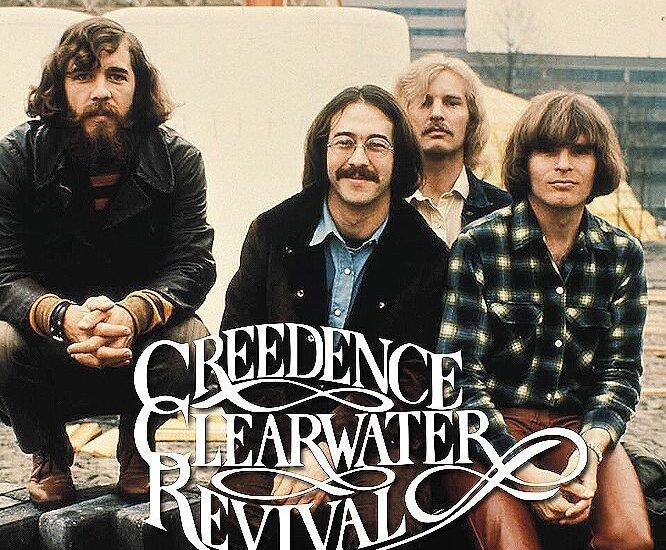
Congratulations: Creedence Clearwater success: The Creedence Clearwater are one of the best-selling hard rock and heavy metal bands, selling over 100 million records worldwide…
Creedence Clearwater Revival (CCR) stands as one of the most influential and best-selling bands in rock music history. Emerging from the late 1960s, they carved out a unique niche that blended rock, blues, country, and swamp pop, leading to a string of hits that resonate with audiences even today. With over 100 million records sold worldwide, CCR’s impact on music and culture is undeniable. This article explores the band’s history, musical style, cultural significance, and enduring legacy.
Origins and Formation
Creedence Clearwater Revival was formed in 1967 in El Cerrito, California, by John Fogerty, his brother Tom Fogerty, Stu Cook, and Doug Clifford. Originally called The Golliwogs, the band struggled to gain traction in the music scene. However, after rebranding as Creedence Clearwater Revival, they began to find their voice. The name was a blend of elements reflecting their musical influences and regional roots, with “Creedence” derived from a friend’s name, “Clearwater” inspired by a beer commercial, and “Revival” signaling a return to their musical roots.
Breakthrough and Success
CCR’s rise to fame was meteoric. Their self-titled debut album, released in 1968, featured the hit single “Suzie Q,” showcasing John Fogerty’s distinctive voice and songwriting prowess. This was just the beginning. Their follow-up albums, Bayou Country (1969), Green River (1969), and Willy and the Poor Boys (1969), included timeless tracks like “Bad Moon Rising,” “Green River,” and “Fortunate Son.” These songs captured the spirit of the era, reflecting societal issues and the counterculture movement.
The band’s ability to merge rock with Americana themes set them apart. Their music often explored themes of disillusionment, rebellion, and the American experience, resonating deeply during a time of political upheaval and cultural change. By the early 1970s, CCR had achieved a string of number one hits, establishing themselves as a mainstay on the Billboard charts.
Musical Style
CCR’s sound was characterized by a blend of rock, blues, country, and swamp rock, which helped to define their unique identity. John Fogerty’s powerful vocals and guitar work, coupled with his insightful lyrics, created a sound that was both timeless and distinctly American. The band’s use of catchy hooks and rhythmic grooves made their songs accessible while still conveying complex themes.
One of the band’s hallmark traits was their ability to tell stories through music. Songs like “The Midnight Special” and “Long As I Can See the Light” showcase Fogerty’s talent for narrative songwriting, drawing listeners into vivid landscapes and emotions. Their distinctive sound was further enhanced by the tight instrumentation of Cook on bass, Clifford on drums, and Tom Fogerty’s rhythm guitar work, which created a cohesive and energetic musical experience.
Cultural Impact
CCR’s music was not just commercially successful; it also played a significant role in the cultural landscape of the late 1960s and early 1970s. Their songs often addressed social issues, including the Vietnam War, civil rights, and environmental concerns. “Fortunate Son,” one of their most famous tracks, became an anthem of the anti-war movement, critiquing the disparities in how the war affected different classes in America.
The band’s music also transcended geographical boundaries, appealing to diverse audiences across the United States and beyond. CCR’s swamp rock style drew heavily from Southern roots music, allowing them to connect with listeners who appreciated authentic American sounds. Their performances at major music festivals, including Woodstock, further solidified their status as rock icons.
The Decline and Breakup
Despite their immense success, internal tensions began to surface within the band. By the early 1970s, disagreements among members, particularly between John Fogerty and his brother Tom, began to take a toll. After the release of their final studio album, Mardi Gras (1972), which featured a departure from their usual sound, the band officially disbanded in 1972.
The breakup was a painful chapter in CCR’s history, with members pursuing solo careers. John Fogerty, in particular, found success as a solo artist, though he struggled with the legacy of CCR and the expectations that followed. The band’s disbandment led to a period of reflection and nostalgia, as fans continued to celebrate their music.
Legacy and Influence
Even after their breakup, the music of Creedence Clearwater Revival continued to resonate with new generations. Their songs have been covered and sampled by countless artists across various genres, demonstrating the timeless quality of their music. From rock legends like Elvis Costello to modern pop icons, CCR’s influence is evident in the work of many musicians.
You may also like
Archives
Categories
- ABA
- Actor
- Actress
- Actress and singer
- Band
- Baseball
- Basketball
- Boxer
- Broadcasting corporation
- CCR
- cricketer
- Cyclists
- Dart
- Drummer
- Fictional character
- Football game
- Formula 1
- Golf
- Guitarist and songwriter
- Guitarists
- Gymnastics
- Hockey
- Ice hockey
- Marathon
- MLB
- Motocross
- MotoGP
- Motorcross
- Musician
- Musician and drummer
- NFL
- NHL
- NRL
- Racer
- Red bull Racing
- Rider
- Rock band
- Rugby league
- Simone Biles
- Singer and songwriter
- Songwriter and musician
- Sport commentator
- Tennis
- Texas longhorns
- Track and field athlete
- Uncategorized
Leave a Reply